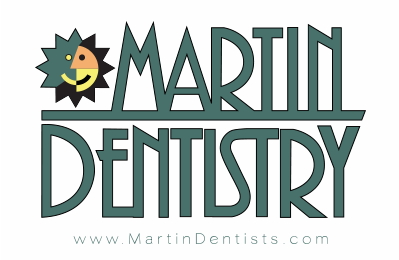About Tooth Extractions
At Martin Dentistry, our team of experienced dentists—Dr. Matt Martin, Dr. Stephanie Martin, Dr. Lynn Marshall, and Dr. Lindsey Garrison—prioritizes proactive dental care to address issues before they escalate. However, there are instances where a tooth has sustained significant damage and extraction becomes necessary to prevent further complications.
Tooth extractions are typically considered as a last resort when the tooth is beyond repair, posing a risk of spreading infection to neighboring teeth or causing extreme pain and discomfort to the patient. Our dental professionals offer both simple and surgical extractions tailored to each patient's unique needs.
Simple extractions are performed when the affected tooth is visible above the gum line. This procedure involves carefully removing the tooth from its socket using specialized tools.
Following the extraction, our team can discuss various options to restore the patient's smile, such as dental implants, bridges, or partial dentures, depending on individual preferences and oral health needs. At our offices in Fishers and Indianapolis, IN, we are dedicated to providing patient-centered care and ensuring our patients are well-informed about their treatment options.
Extractions Reviews
What to Expect
Depending on whether the dentist performs a simple or surgical tooth extraction, the technique and experience will differ. In either case, there will be a thorough examination prior to extraction when X-rays will be taken to determine the type of extraction needed. In addition, the patient is usually offered a form of sedation to help the patient feel comfortable and at ease during the procedure. It’s advised that the patient not eat or drink anything for 6 – 8 hours before the surgery. If a patient experiences nausea or vomiting before the extraction, they will need to call the dentist’s office to possibly reschedule to avoid health complications. Smoking on the day of surgery is prohibited because of the risks and complications it can pose in the healing process.
Simple Extraction
With a simple extraction, the dentist will give the patient a local anesthetic to alleviate any pain. The dentist will use a pair of forceps to grip the impacted tooth and loosen it from the jawbones and the ligaments which hold it in place. The socket that holds the tooth must be widened and enlarged to separate the tooth from the ligaments. A device called a dental elevator, a screwdriver-like tool, is placed between the tooth and gum to make it easier to remove the tooth by expanding the socket.
Surgical Extraction
Wisdom teeth or any teeth not visible above the gum line, such as severely broken teeth or teeth with long, curved roots require a more complex surgical extraction. General anesthesia is often used on the patient prior to procedure. To obtain access to the impacted tooth, the dentist may need to cut through bone, gums, and tissue. Sometimes, the dentist will need to cut the tooth in pieces in order to fully remove it.
Treatment Aftercare
After either type of extraction, a blood clot will usually form in the socket of the removed tooth. After a simple extraction, the dentist will pack the area with gauze and have the patient bite down in order to stop bleeding. With surgical extraction, the dentist will stitch the area and then place the gauze pads. After extraction, the patient should refrain from unnecessary eating, drinking, or talking for at least 2 hours. After the bleeding has stopped, the patient should drink plenty of cold or lukewarm fluids.
On the first day after the extraction, only soft foods should be eaten and the patient shouldn’t brush or rinse their teeth for 12 hours following the extraction. When brushing is resumed, the extraction area should be avoided with the toothbrush, but the area can be gently rinsed with salt water. The patient also shouldn’t spit forcefully, which may dislodge the blood clot. The healing process usually starts about 1 – 2 weeks following the tooth extraction. This is the time when new gum tissue and bone will fill in the gap where the tooth or teeth have been removed. After about 3 – 4 weeks, the gums should be fully healed. Complete healing of the entire mouth can take up to 6 months, but it varies from person to person.

Want to Know More?
If you think that you could benefit from a tooth extraction, we would be more than happy to assist you. Give our friendly staff a call today, so we can schedule your consultation immediately. During your consultation, the dentist can give you all of the information you need about tooth extraction to help you make an informed decision.

